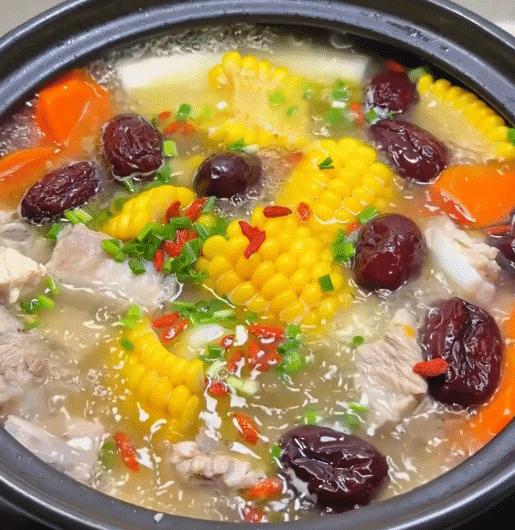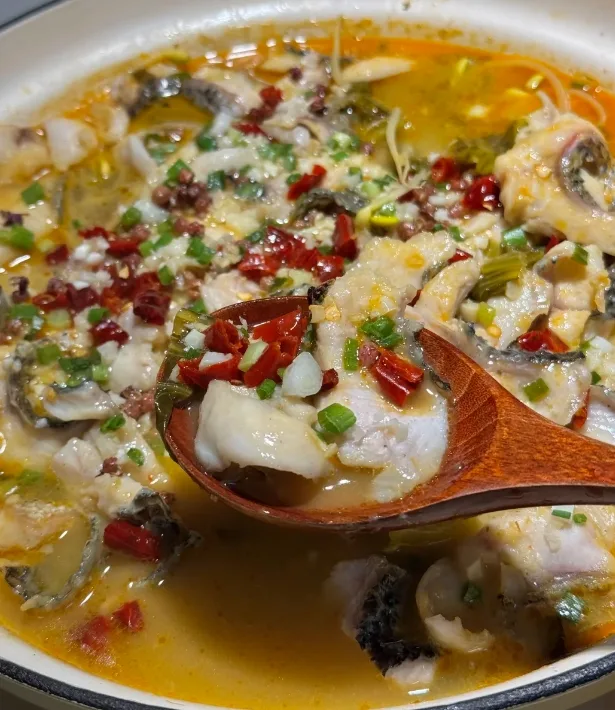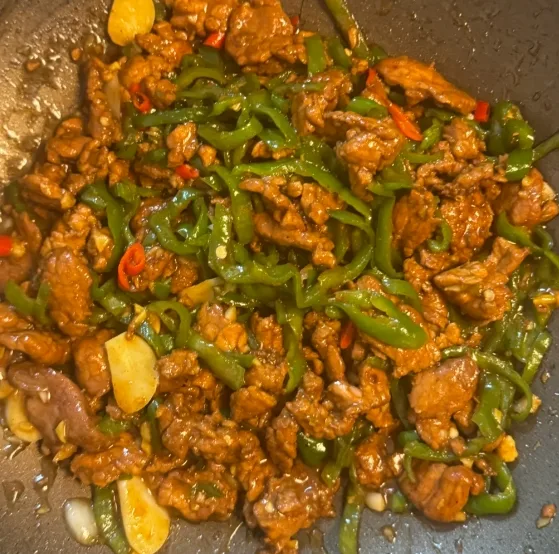Eating fish eyes for eyesight? Then you should get microscopic vision by eating an eight-eyed eel! You want to write neatly with chicken feet? A pianist should eat chicken feet all the time! Of course, these exaggerated associations just prove that the true meaning of food culture is never scientific precision, but to make the concept of health like old soup, the more it boils, the more flavorful it is.
Writing this reminded me of our classic food mantra: ‘Rib soup for height, ribs for strength!’ Turns out grandma’s advice wasn’t medically sound – but hey, it made me finish my soup!
These childhood food myths created unexpected joys. For me, the real magic wasn’t in growing taller — it was in those tiny rituals: I’d noisily suck the marrow from the bones, that rich umami bursting in my mouth while grease shimmered on my lips. Turns out grandma’s advice wasn’t medically sound, but hey, it taught me to savor every drop of life’s simple soups.
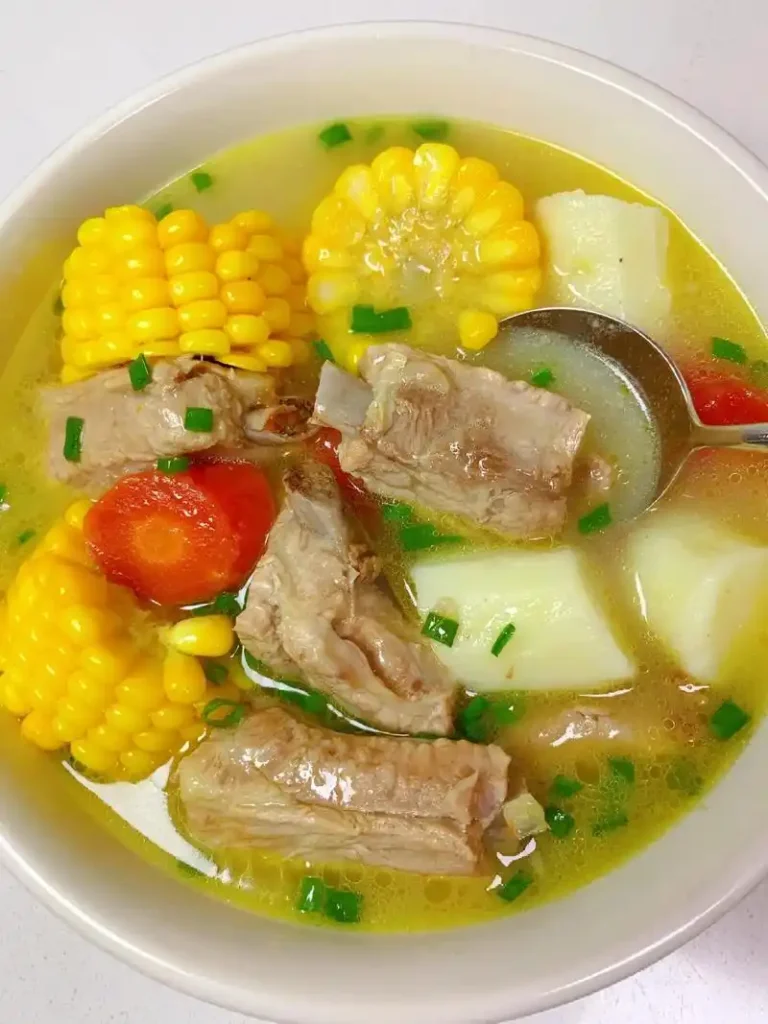
Various Ways to Make Pork Ribs Soup
Yet the mystery of pork ribs’ universal compatibility with all sorts of ingredients puzzled me for years. It wasn’t until I prepared my very first rib soup that the culinary wisdom behind this perfect pairing finally dawned on me.
Here’s the ultimate no-fuss guide to Chinese rib soups – so easy even your Instant Pot can handle it! Pick your craving and let’s go!
How to Make Corn and Pork Rib Soup
A classic homestyle dish, corn and pork rib soup combines simple ingredients with effortless preparation. By simmering pork ribs with fresh corn, scallions, ginger, and salt, you’ll create a nourishing broth that’s both savory and naturally sweet. The corn not only enhances flavor but also helps lower cholesterol and prevent arterial plaque buildup. Regular consumption aids digestion, soothes the lungs, and may contribute to longevity.
Preparation:
Shuck the corn, remove the silk, and cut into segments.
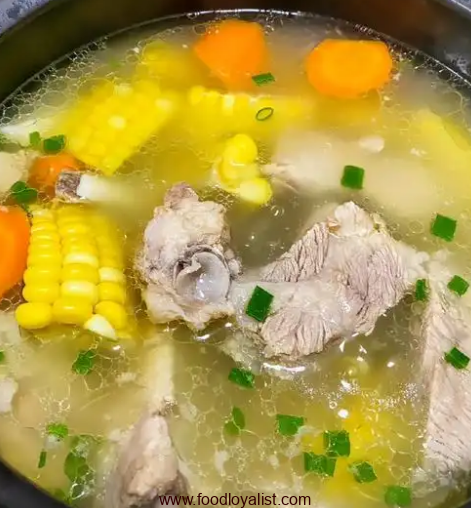
How to Make Yam and Pork Rib Soup
This revitalizing soup pairs tender pork ribs with nutrient-dense yam, offering a balanced blend of flavor and wellness benefits. Known in Traditional Chinese Medicine to support kidney health and immunity, it’s an excellent choice for replenishing energy or addressing nutritional gaps.
Preparation:
Thoroughly rinse the yam, peel it, and dice into bite-sized pieces.
Chef’s Tip
“For a flavor boost, try adding both corn and yam—their natural sweetness perfectly complements the rich pork broth!”
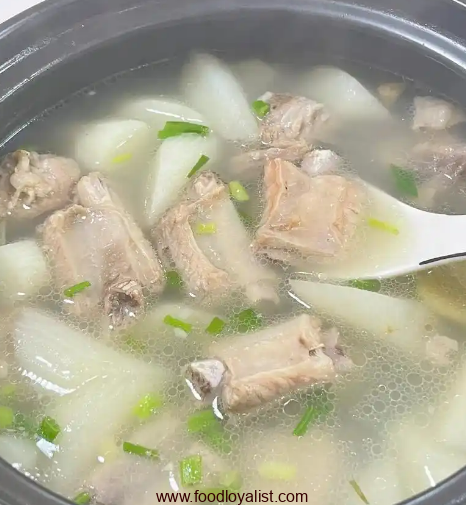
How to Make Kelp and Ribs Soup
Kelp and Ribs Soup is an easy-to-prepare dish that offers multiple health benefits. Kelp provides abundant calcium and potassium, which aid in weight management by preventing calcium deficiency and promoting water metabolism to reduce bloating. Rich in iodine and minerals, it’s particularly beneficial for pregnant women, though moderation is key due to its high iodine content. Pork ribs supplement the soup with protein and calcium.
Preparation:
Soak the kelp, then steam for 30 minutes. Re-soak in water for 4 hours until fully softened.
Rinse, drain, and cut into uniform cubes.
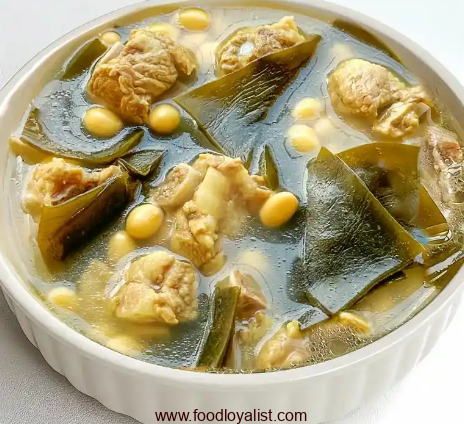
Winter Melon Rib Soup Recipe
Prized for its light flavor, winter melon rib soup delivers protein and vitamins that support bone health, especially for children and seniors. Winter melon is a nutrient-dense vegetable, containing per 100g: protein, carbohydrates, calcium, iron, phosphorus, and notable amounts of vitamin C.
Preparation:
Peel and thoroughly wash the winter melon, then cut into bite-sized pieces.
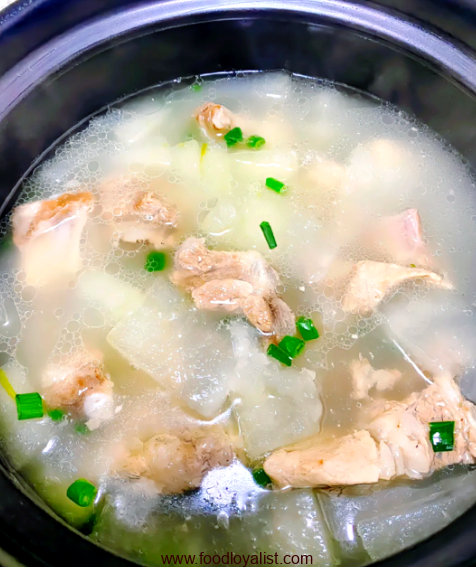
Best Pots for Making Chinese Rib Soup
Choose the Right Tool: Don’t Be That Person Who Uses a Wok for Soup!
Let’s be real—using a wok to make soup is like trying to grill steak in a toaster. Sure, it technically works, but you’re just asking for:
A ruined wok (that non-stick coating? Gone.)
mediocre soup (uneven heat = weak flavor)
Extra cleanup (because scrubbing burnt broth is so fun)

Clay Pot (Best Choice): The clay pot is the traditional top pick for soup-making. Its porous material allows even heat distribution and long-lasting warmth, helping ingredients fully release their flavor and nutrients. The earthenware also absorbs excess fat, resulting in a clearer broth. Ideal for slow-cooked soups, especially meat-based or herbal tonics. However, clay pots are heavy and prone to cracking if exposed to sudden temperature changes.
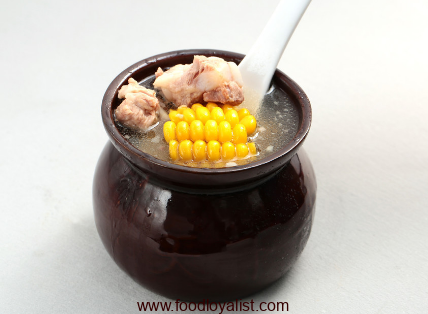
Ceramic/Enamel Pot (Second Choice): Ceramic or enamel-coated pots have a smooth interior, high heat resistance, and excellent moisture retention, making them great for light vegetable or seafood soups. Enameled cast iron pots (like Dutch ovens) heat quickly and retain warmth well but are expensive and heavy. Ceramic pots are lighter but don’t hold heat as effectively as clay pots.
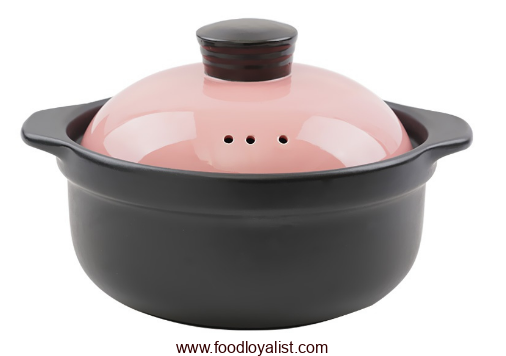
Electric Rice Cooker (Convenient Option): Many modern rice cookers have a “soup” function, making them a handy alternative for simple broths. They’re foolproof—just add ingredients and let them simmer automatically. Great for congee or light soups, but they lack the depth of flavor from traditional stovetop methods. Some high-end models offer slow-cooking modes for better results.
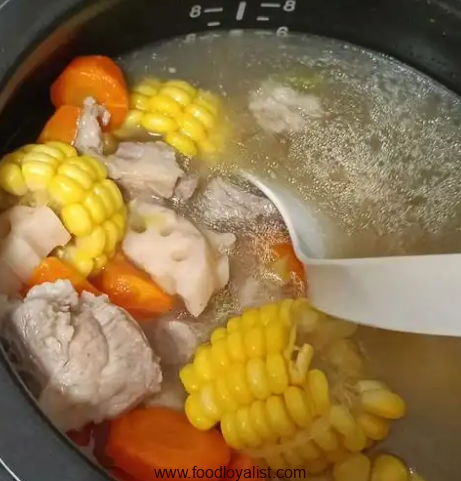
Best Types of Pork Ribs for Soup
Choosing the right ingredients is the most crucial step in making a delicious soup.
If you’re unsure about which cut of pork ribs to use, here’s a simple guide to help you pick the best one for your dish:
Pork Back Ribs – Lean and tender, perfect for light, clear broths.
Pork Spare Ribs – More fat and flavor, ideal for rich, hearty soups.
Pork Neck Bones – High in collagen, great for thick, gelatinous broths.
Each type brings a unique texture and taste to your soup, so choose based on the flavor and consistency you want to achieve. Remember, good soup starts with good bones!
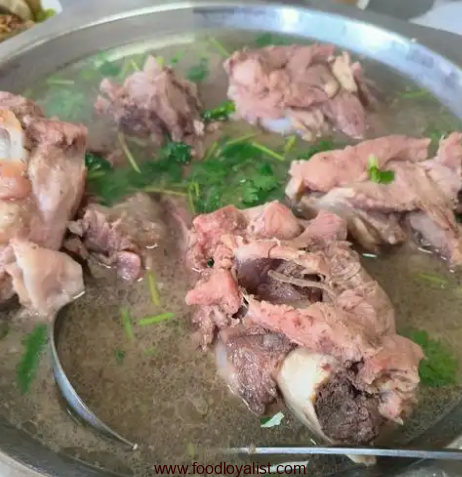
Method of boiling pork rib soup
Prep: Blanch pork ribs, then layer in a clay pot with corn, carrots, and red dates.
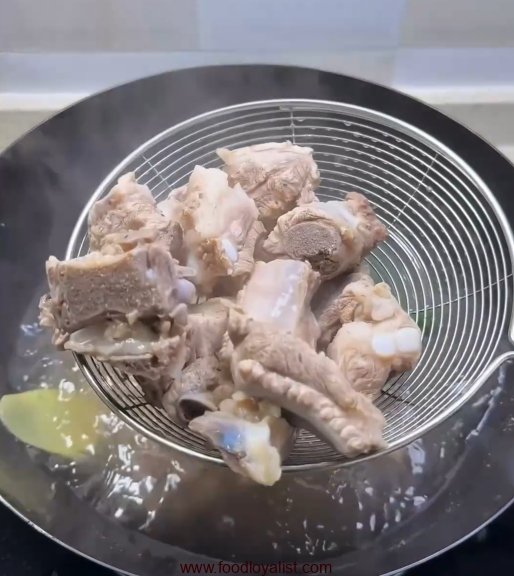
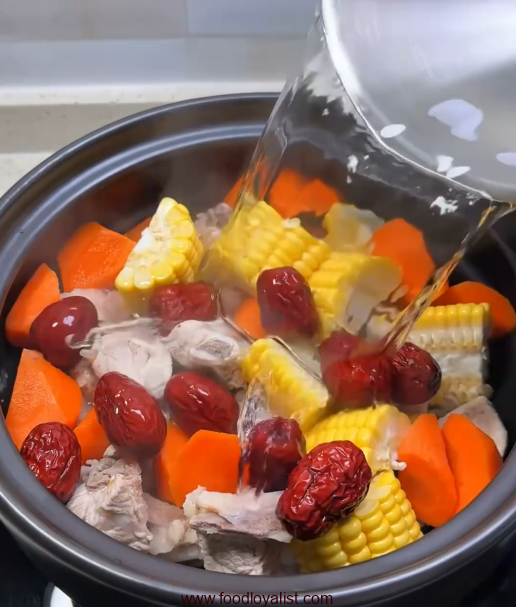
Simmer: Pour boiling water (2″ above ingredients), cover, and simmer 45 mins on medium-low. Skim off foam.
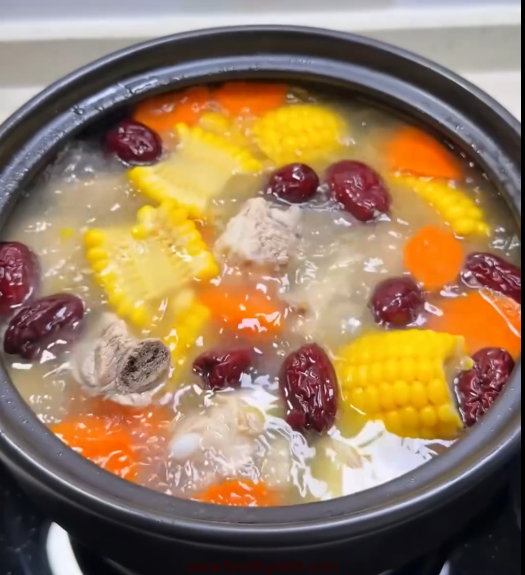
Season: When broth reduces by 1/3, add salt and chicken bouillon to taste. (Tip: Add hot water only if needed to submerge ingredients.)
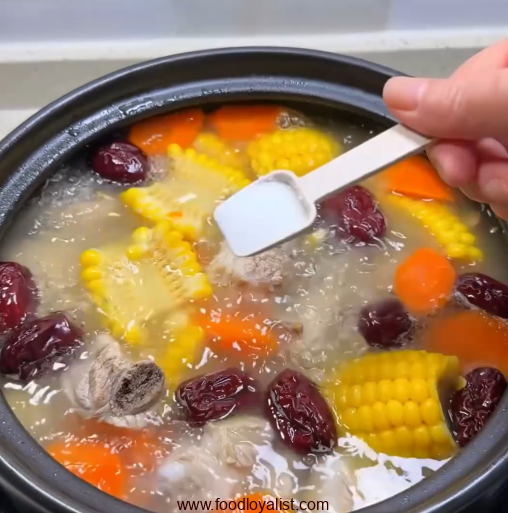
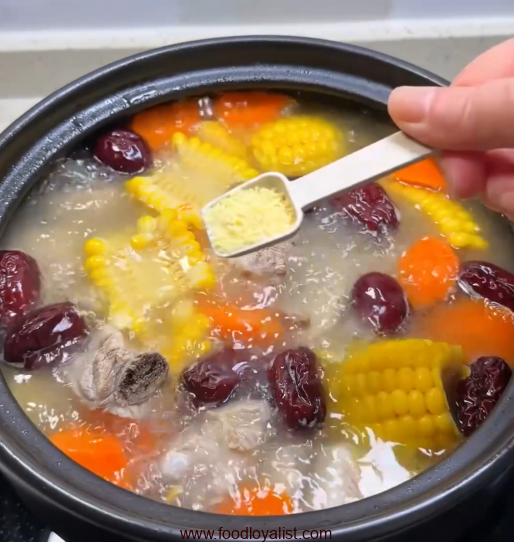
Finish: Stir in yam(You can freely add the side dishes you want to eat), simmer uncovered 15 mins until tender.
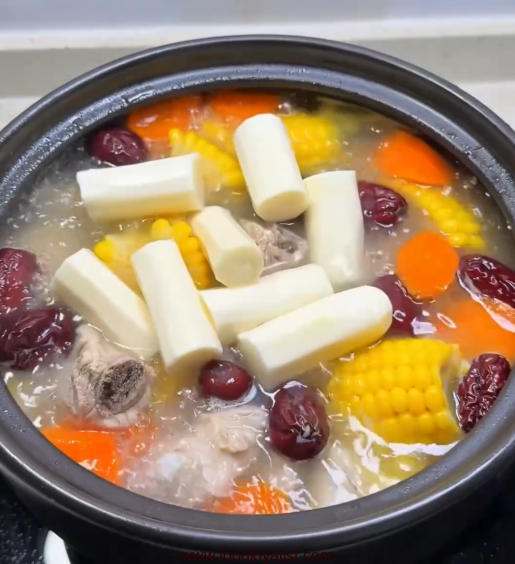
Serve: Top with goji berries and scallions. Best enjoyed hot!
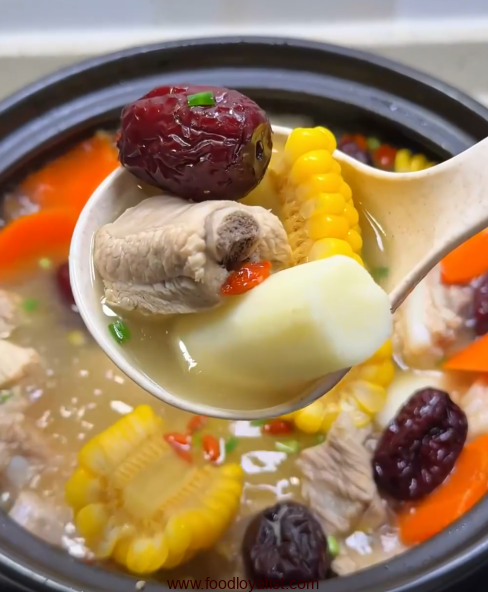
spare ribs soup
Recipe by Chinese Food Loyalist10
minutes1
hour1
hour10
minutesLearn how to make the best spare ribs soup with tender meat, sweet corn, and nourishing herbs. This step-by-step recipe is simple, healthy,Perfect for cozy family meals!
Ingredients
Blanched pork ribs
Fresh corn, cut into sections
Carrots, peeled and cut into chunks
Red dates, rinsed
Yam, peeled and cut into chunks
Goji berries (for garnish)
Scallions, finely chopped
Salt to taste
Chicken bouillon powder (optional)
Directions
- selecting premium ingredients and thoroughly eliminating any unpleasant odors.
- In a clay pot, combine blanched pork ribs, corn, carrots, and red dates.
- Add enough boiling water to fully submerge all ingredients (about 2 inches above).
- Cover and simmer over low-medium heat for 45 minutes.
- Skim off any impurities that rise to the surface.
- When the broth has reduced by about one-third, season with salt and chicken bouillon powder to taste.
- Pro Tip: If needed, add just enough hot water to keep ingredients submerged (this maintains moisture).
- Add yam pieces and continue simmering uncovered on low heat for 15 minutes, or until yam is tender.
- Garnish with goji berries and chopped scallions.
- Serve immediately while hot.
Recipe Video
Notes
- Dried kelp: Soak for 2 hours (change water halfway), scrub off the surface mucus, and cut into pieces.

